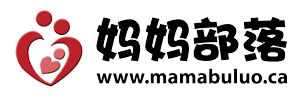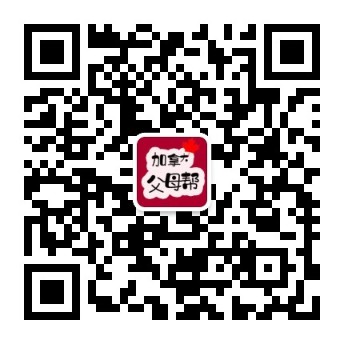Notifications
Clear all
Topic starter
28/09/2025 11:00 下午
As a parent who once rushed around for my child’s ELA (English Language Arts) learning, I was once fixated on the "in-person teaching" model of offline institutions. I accompanied my child to offline ELA classes for nearly a year, only to find endless problems. It wasn’t until we tried WuKong ELA that my child’s learning state changed completely. Today, based on my real experience, I’ll compare WuKong ELA with offline institutions to provide practical references for other parents who are also choosing ELA tutoring for their kids.
First, the Gap in Learning Convenience: Bid Farewell to "Commuting Anxiety" Once and for All
The offline ELA institution I enrolled my child in before was a 30-minute drive from our home. We had classes twice a week, and every time, I had to start preparing 1.5 hours in advance. On workdays, I had to leave work early to pick up my child and then rush to the institution. We often got stuck in evening rush-hour traffic, and it was common for my child to attend class on an empty stomach. Once, there was a sudden heavy snow in winter, and the roads were icy. To avoid missing the class, we still braved the weather to go out. As a result, we were 20 minutes late, and my child’s hands and feet were freezing cold—they couldn’t focus on the lesson at all.
WuKong ELA, however, completely breaks the "geographical barrier"—my child can attend classes at home. All we need to do is turn on the tablet 10 minutes in advance, check the internet connection, and then enter the classroom. I no longer have to rush around for commuting, and my child can learn in a familiar and comfortable environment: they can eat something in advance if they’re hungry, and take a break during class intervals if they’re tired. What’s even more thoughtful is that if my child gets sick suddenly or has other arrangements and misses a live class, they can watch the replay later. They can pause or rewatch the video at any time, so there’s no need to worry about falling behind. Just this one advantage makes WuKong ELA much more hassle-free than offline institutions.
Second, the Gap in Teaching Adaptability: Truly Realize "Personalized Learning"
Most offline ELA classes are large classes with about 20 students. Teachers follow a unified teaching plan, and regardless of a child’s foundation or learning ability, everyone has to keep up with the whole class. My child’s English foundation was relatively weak, and they struggled with reading comprehension and writing. However, the teacher had to finish the scheduled text content and grammar points in each class, leaving no time for one-on-one tutoring. My child couldn’t keep up with the progress, became less and less confident as they learned, and didn’t dare to speak up actively in class. Even homework had to be completed with my step-by-step guidance.
WuKong ELA adopts a "small-class teaching + personalized adaptation" model. Each class has a maximum of 8 students, and before the course starts, the child takes a basic assessment. A customized learning plan is then made based on the assessment results. When my child first started learning, the teacher noticed their weakness in reading comprehension and specially added "paragraph intensive reading" training to the course. They used animations to break down the structure of articles and taught my child how to find topic sentences and mark key words. For writing weaknesses, the teacher started with "sentence imitation" and guided my child step by step to build an article framework. Now, in every class, the teacher pays attention to each child’s performance. My child can get timely answers when they have questions, and gradually dares to take the initiative to share their ideas. This "teaching students in accordance with their aptitude" approach is completely impossible in large offline classes.
Third, the Gap in Content Interest: Turning Kids from "Passive Learners" to "Active Learners"
The course content of offline ELA institutions is very boring, basically following a "textbook + exercise" model. Teachers just explain the text, mark key points, and assign exercises in class. My child sat up straight every time in class, but their eyes were full of tiredness. Even after class, I had to repeatedly urge them to do homework. Once, I flipped through my child’s textbook and found it full of dense knowledge points—there were even very few illustrations. Not to mention a child, even I found it boring to look at.
WuKong ELA’s course content, however, is like a "language adventure journey"—it integrates knowledge points into interesting scenarios and interactions. For example, when learning "narrative writing," the teacher uses animations to present a short story, guides the children to analyze the four elements (time, place, character, plot), and then lets them try to continue the story. When learning "vocabulary memorization," methods like "vocabulary solitaire games" and "image association memory" are used to help children remember words while having fun. The course also includes a lot of extended resources, such as short English animation clips and interesting picture book readings. My child often takes the initiative to click on these resources after class and even tells me, "Turns out ELA learning is so fun!" This "education through entertainment" method has completely changed my child’s resistance to ELA.
Finally, the Gap in Post-Class Feedback: Allowing Parents to Grasp Learning Progress Accurately
The post-class feedback from offline ELA institutions is extremely delayed. Usually, a test paper is handed out once a month, with only a score and simple comments like "made obvious progress" or "needs more effort." It’s impossible to see exactly what the child has mastered well and where they are lacking. If I wanted to communicate with the teacher about my child’s learning situation, I could only do so in the few minutes after class—but every time, many parents surrounded the teacher, leaving me no chance to talk. In the end, nothing was resolved.
WuKong ELA’s post-class feedback, by contrast, is timely and detailed. After each class, the teacher generates a detailed "learning report." It not only includes the child’s in-class performance score but also lists "strengths in knowledge points" and "areas needing improvement." It even attaches screenshots of the child’s in-class speeches and homework corrections, marking specific problems. For example, if the child made many grammar mistakes in writing, the teacher would suggest in the report: "Do more targeted grammar exercises after class, focusing on the use of tenses." If the child missed key points in reading comprehension, the teacher would give guidance: "Next time, first circle the key words in the question, then go back to the original text to find the answer." I can check this feedback at any time through the parent APP and also communicate with the teacher online to help my child fill in knowledge gaps in a targeted way. I no longer have to "worry blindly."
Now, my child has been learning with WuKong ELA for 4 months. Not only has their English score improved from the lower-middle level to the upper-middle level in the class, but more importantly, they have developed a strong interest in ELA learning. Every day, they take the initiative to pick up the tablet to read English picture books and share the new knowledge they’ve learned with me. If your child is also troubled by the "tiring commutes, fast progress, and poor feedback" of offline ELA institutions, you might as well try WuKong ELA. You may see a brand-new attitude of your child towards language learning, just like me. Of course, every child is different—it’s recommended to first sign your child up for a trial class to see if it’s suitable!





